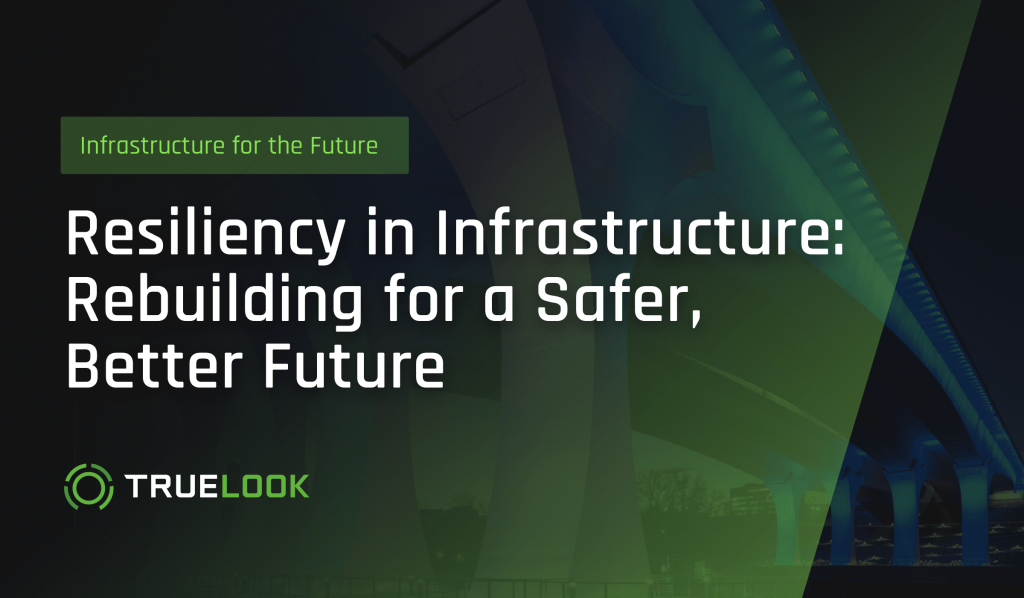
When it comes to building and maintaining infrastructure, resiliency has always been a number-one priority.
However, as global climate change and natural disasters continue to impact both new starts and existing builds, firms and contractors are increasingly prioritizing infrastructure and sustainability.
Recently, Dodge Construction Network’s May 2022 Civil Quarterly report has pointed to resilience in US infrastructure as an industry priority, with more than 80% of civil contractors and more than 90% of civil engineers reporting to have worked on resilience-focused projects.
The federal investment in resiliency to provide safe and better outcomes for America’s cities and citizens
As infrastructure projects are critical in public transportation and safety, as well as the day-to-day of cities across the country, resiliency in infrastructure is prioritized not just in the private sectors, but in government-wide programs and policy as well.
In 2021, the United States Congress passed the Infrastructure Investment and Jobs Act (IIJA) – a bipartisan law that has heralded a “once-in-a-generation” investment in infrastructure and is the nation’s largest investment in resiliency. The law provides significant funding to rebuild and reinforce national infrastructure on multiple levels: transportation in roads, bridges, airports, and railways; clean and safe drinking water; power grids and high-speed internet access; community-based economic support; and environmental and climate justice. One of the primary focuses of the law, which in tandem with President Biden’s ‘Build Back Better’ Framework, has projected to add 1.5 million jobs per year for the next decade, planning to rebuild and reinforce infrastructure resiliency against the impacts of climate change, extreme weather, and potential attacks. In 2020, the United States was impacted by more than 20 extreme weather and climate disasters, leading up to $100 billion in damages and loss. The IIJA has allocated over $50 billion in weatherization and infrastructure projects to protect against the increasingly damaging impacts of climate change and extreme weather events, such as droughts, heat waves, wildfires, and flooding.
Resiliency in infrastructure as a socio economic justice initiative
While the financial and structural damage of weakened infrastructure is reason enough to warrant private and national investment in resiliency, it is also critical for builders and policy-makers to consider the impact of infrastructure on the everyday lives of the people who use them. Studies have shown that communities of color and low-income communities are more likely to live in areas that are most prone to flooding and other extreme weather events. They are also more likely to live and work in polluted and environmentally hazardous areas – remnants of former industrial and energy Superfund and Brownfield sites. The IIJA is investing in resiliency through the reclamation and cleanup of abandoned mines, as well as capping orphaned oil and gas wells.
This year, the nearly 150,000 residents of Jackson, Mississippi have faced an unprecedented water crisis. The failure of the main pumps in O.B. Curtis Water Treatment Plant was largely caused by severe flooding, but the situation was exacerbated and made dire by underfunding and disinvestment from the majority-Black city’s municipal water and sewage systems. After two months that left Jackson residents without safe drinking water, the Environmental Protection Agency declared Jackson’s water ‘safe to drink’ in late October. In the aftermath, Jackson Mayor Chokwe Antar Lumumba and State Governor Tate Reeves have reported that the city is now actively searching for a private firm to operate and maintain the Water Treatment Plant.
Private firms are working to prevent and mitigate environmental disasters
TRC, a leading construction and engineering management firm, focuses on infrastructure in metro, suburbs, and rural areas. In a recent project, TRC tackled coastal erosion in Massachusset’s Chapin Beach, where erosion threatens to wash out the road. The team researched and identified different solutions to mitigate erosion, including road relocation, dune restoration, and beach nourishment. Conceptual engineering plans include sustainable infrastructure alternatives that prioritize beach nourishment while tackling other environmental factors such as sea level rise and future erosion rates. Once the local government decides on which solution to approve, TRC’s coastal resilience evaluation and design will be used in a critical municipal effort to reduce erosion and protect an economically and socially critical area from storms and flooding.
While structural resilience is one of the highest priorities and one of the most effective defenses against the impacts of climate change and natural disasters, contractors and firms are also looking into innovation and efficiency as key factors to building and maintaining infrastructure. As all industries across the globe prepare for the recession and continue rebuilding from the last two years of hardship and uncertainty, leaders are forging new paths. Firms and contractors are prioritizing building infrastructure and buildings that can withstand extreme conditions, while innovating for efficiency and sustainability. One example is the company MetroPolder, who developed the Polder Roof to address flooding and extreme heat in cities – their solution transforms roofs for smart and controlled water storage, which stores rainwater for future use or disposal. This innovation for metro areas and cities provides a three-prong solution to urban flooding, cooling against excessive heat, and stormwater management.
The future of infrastructure is here
As we continue building and reinforcing in this new decade, firms and contractors across the construction and engineering industries are increasingly prioritizing resiliency and sustainability in infrastructure. New builds and reinforcement projects in metro, suburban, and rural areas have to withstand the uncertainty of increasing climate change and extreme weather events. Fortunately, construction and engineering have always been at the forefront of innovation, making it clear to see that resiliency in infrastructure is taking precedence in both the private and public sectors.
As a proud leader in construction software, TrueLook’s construction cameras help firms monitor and secure their jobsites as they continue building and reinforcing for a safe and resilient future. Read our blog on the latest industry news and insights, or check out our case studies to see how we support and transform construction firms.

